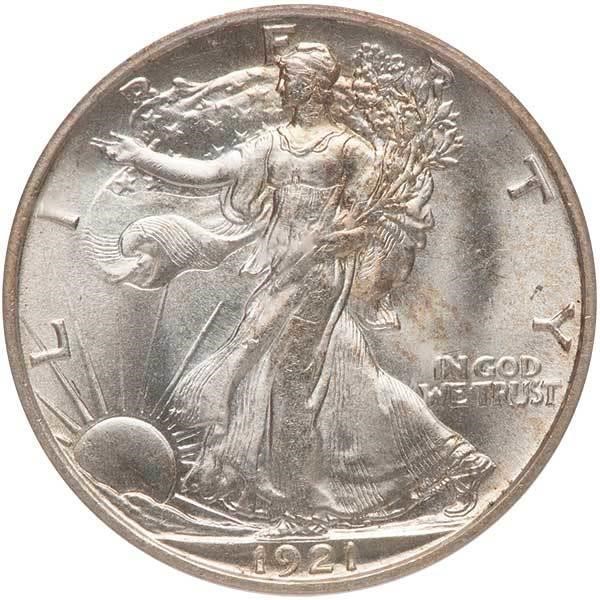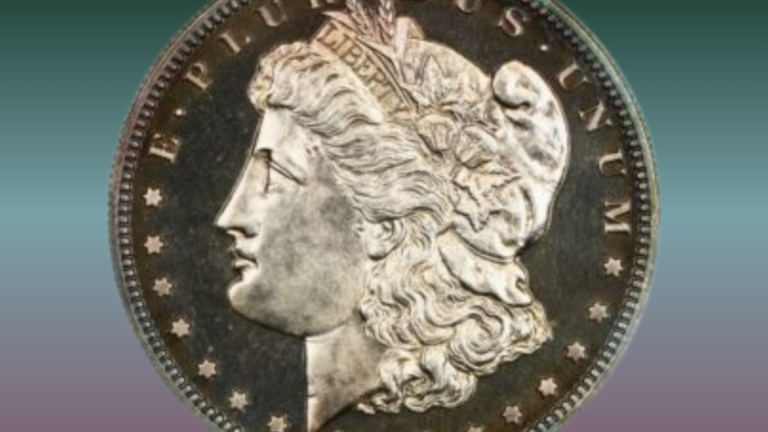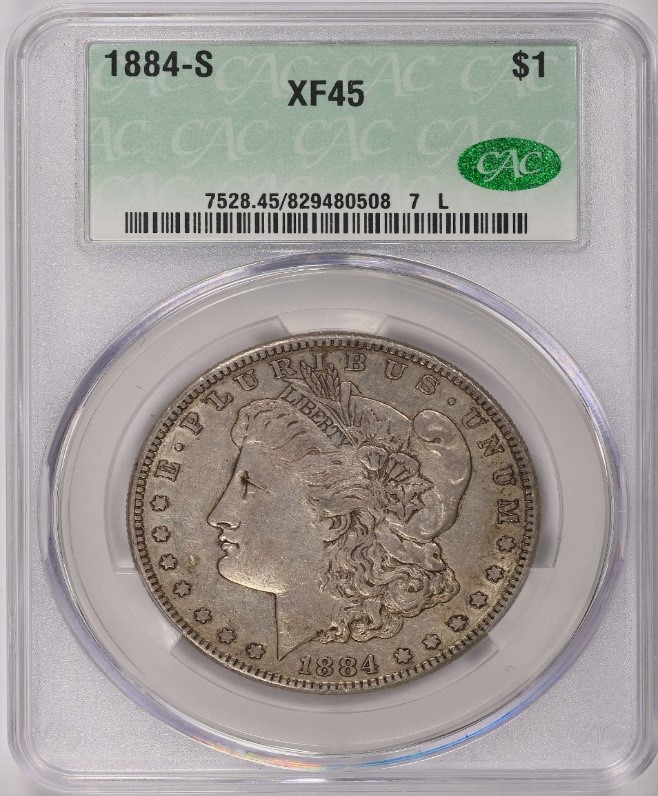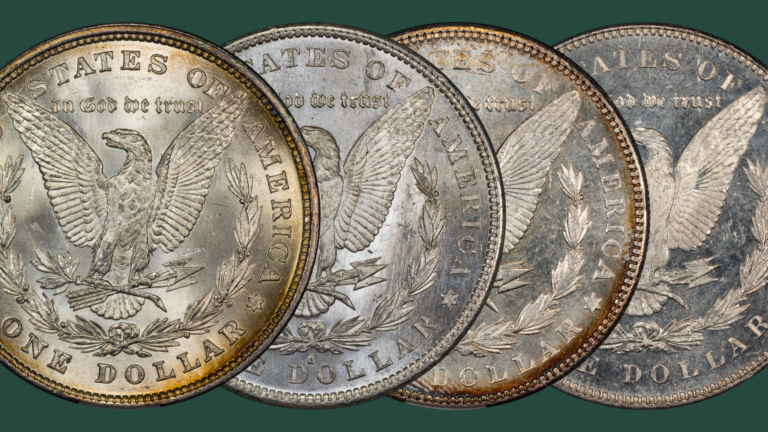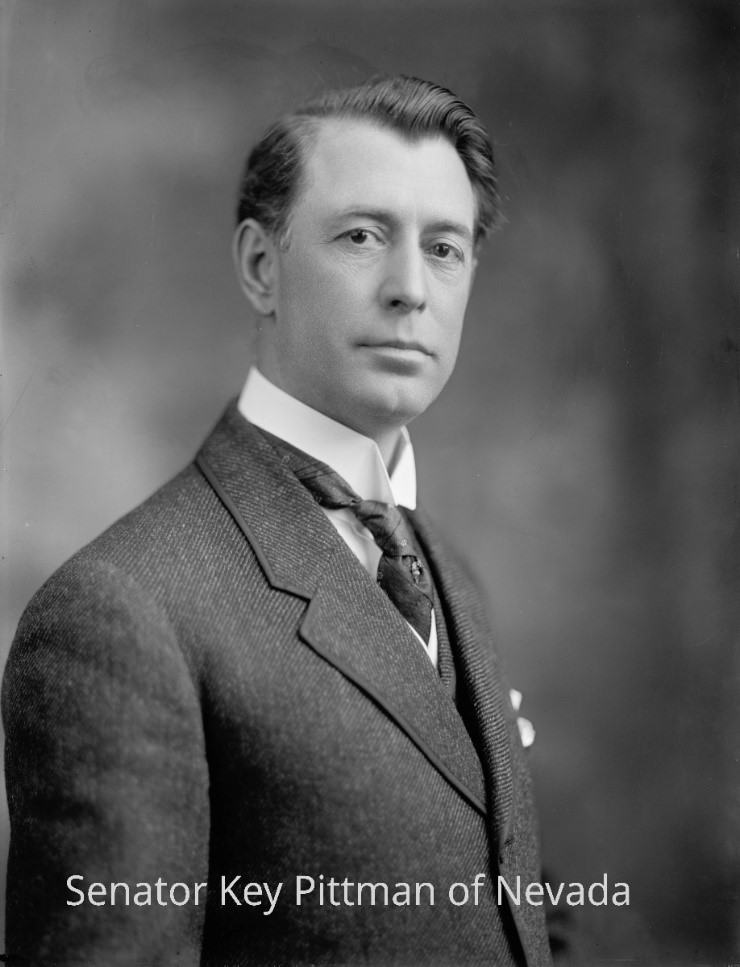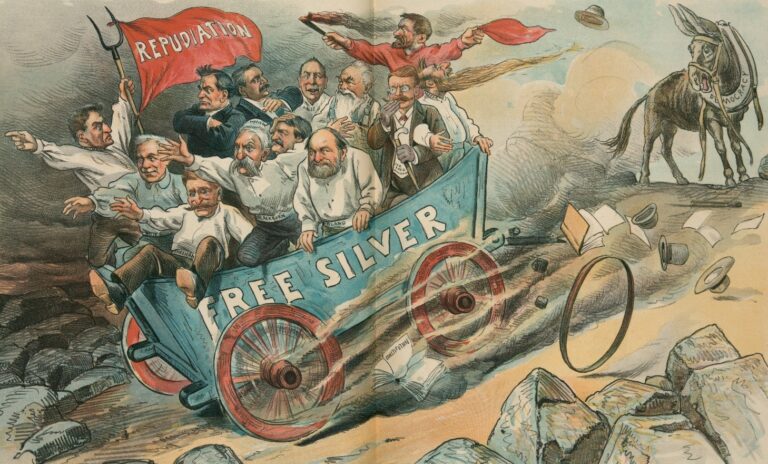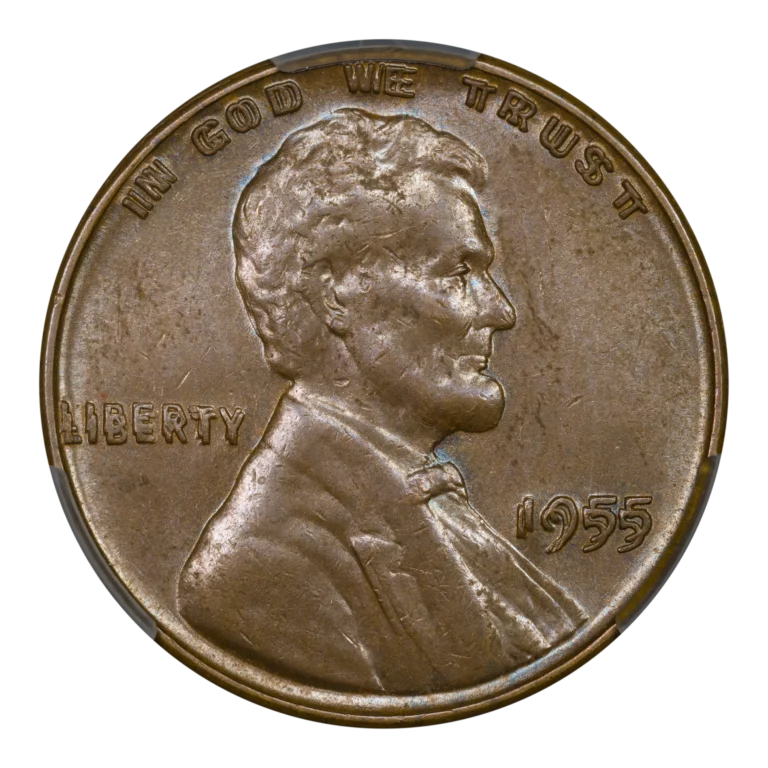by Greg Reynolds
This discussion is about assembling a set of Choice Uncirculated Walking Liberty half dollars (1916-47) ‘by date.’ As numerical grading for U.S. nickel, silver and gold coins became very popular during the late 1970s and early 1980s, “Choice Uncirculated” coins were typically referred to as grading “MS-63.” By the middle of the 1980s, MS-64 grade coins were often called “Very Choice.” A set ‘by date’ of MS-63 to -64 grade Walkers is a realistic goal and can be truly completed in a few years, possibly in a few months.
In my view, it would be more fun and culturally worthwhile to patiently build a set of coins that feature natural toning and/or have noteworthy pedigrees. I like focusing on coins that were previously in excellent collections, especially collections that were or should have been famous during their own respective times. Each collector, however, should pursue coins that are appropriate for and desired by him or her. There is no single collecting formula that is suitable for all interested coin buyers.
Choice Uncirculated Known as MS63 and MS64
Collectors of Choice Uncirculated, classic U.S. coins should not obsess about the dividing lines between MS-63 and MS-64. I have seen many outstanding MS-64 and MS-63 grade coins, with pleasant natural toning and/or appealing original luster.
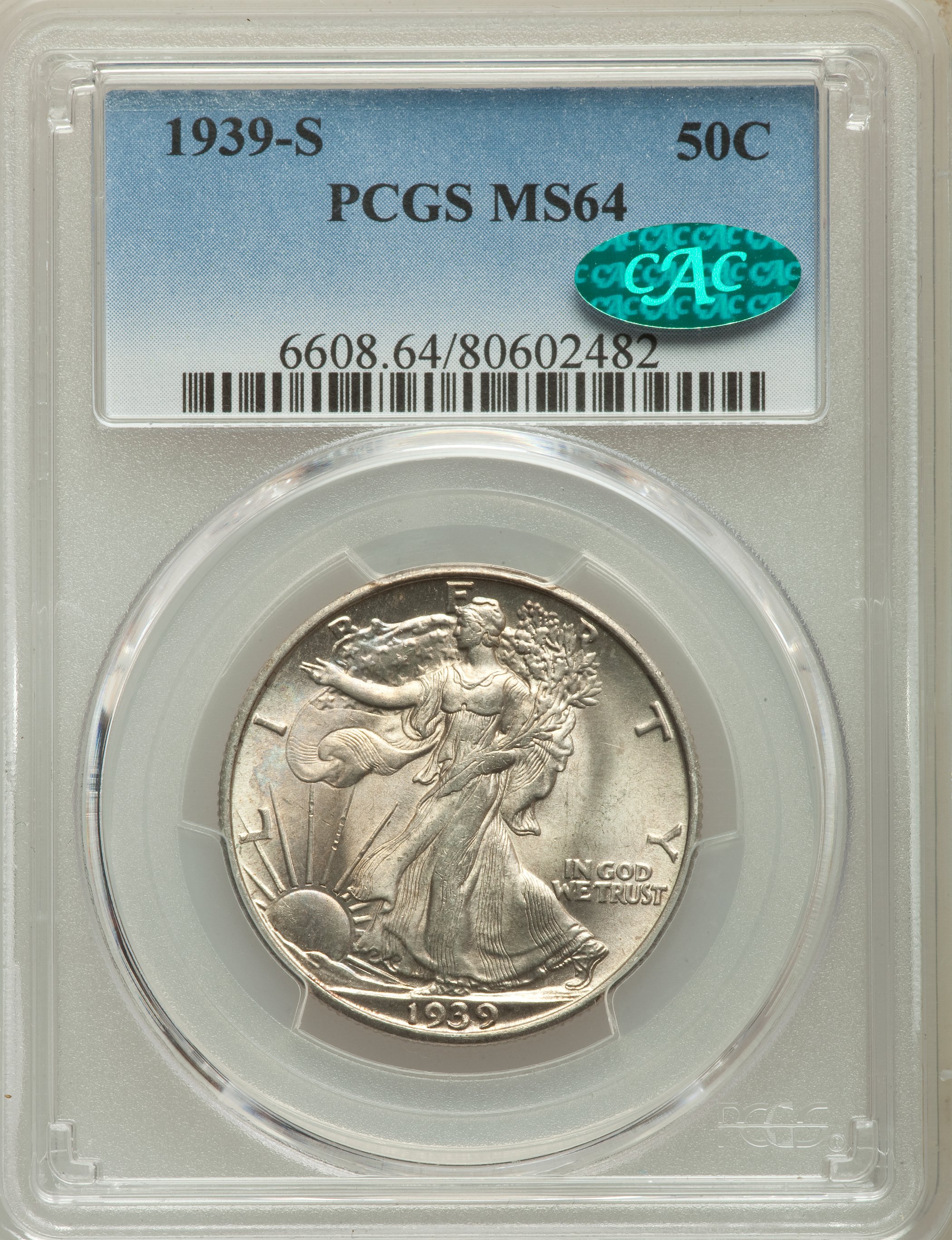
PCGS or NGC graded MS-63 and MS-64 grade coins tend to cost much less than corresponding coins that are certified as grading from MS-65 to MS-68, which are usually said to be of ‘gem’ quality. Despite having noticeable imperfections, Choice Uncirculated, classic U.S. coins are typically attractive and many collectors find them to be much better values than corresponding gem quality coins. For many dates in the series of Walking Liberty half dollars, a MS-65 grade coin costs more than three times as much as a MS-63 grade coin.
Choice Uncirculated coins are ‘in between’ the MS-60 to -62 mediocre group and the MS-65 to -68 gem group. The MS-60 to -62 group includes coins that have a large number of annoying contact marks and/or hairlines. Coins that exhibit much friction and/or have been chemically cleaned may also be certified as grading in the MS-60 to -62 range. Furthermore, a strictly uncirculated coin with annoying gashes, which probably came about while coins were bumping each other in standard bags or in bins at the respective mints, may sometimes be certified as MS-60 or -61. Usually, not always, the premiums paid for certified MS-63 or -64 grade coins over the market levels for corresponding MS-60 to -62 coins are very much worthwhile.
Someone who desires, though cannot afford, MS-63 grade coins of particular dates may wish to consider coins that grade in the XF-45 to AU-58 range rather than those in the MS-60 to -62 range. There are many really pleasing XF to AU grade coins that have honest wear and few imperfections, though these are often lumped together with XF to AU grade coins that have many contact marks or have been very noticeably cleaned. Many collectors have found that AU-58 or even AU-55 grade coins are suitable substitutes for MS-63 grade representatives of some of the key or even semi-key dates, which are relatively expensive in MS-63 grade.
Uncirculated “Late Date” Walking Liberty Half Dollars
Uncirculated ‘Late Date’ Walkers are usually very inexpensive. Indeed, ‘Late Date’ Walkers constitute a category that is the opposite of key dates. These were minted from 1941 to 1947 and are extremely common in 2022.
CAC approved MS-63 to -64 grade, common date Walkers tend to sort of fall under the radar of dealers. A CAC fee plus shipping costs amount to a significant percentage of the value of each. Few dealers submit sub-65 grade common date Walkers to CAC, and many collectors seek CAC approved MS-65 and higher grade, ‘Late Date’ Walkers.
Only a small number of PCGS or NGC graded MS-64, Philadelphia Mint ‘Late Date’ (1941-47) Walkers are currently CAC approved. For example, merely twenty-nine 1941 Walkers are CAC approved at the MS-64 level. For all MS-64 grade Philadelphia Mint Walkers from 1941 to 1947, the CPG retail price estimate is $83. The largest CAC population for a MS-64 grade Philly Walker from 1941 to ’47 is seventy-three 1945 Walkers in the MS-64 range.
Both market levels and CAC populations are higher for Branch Mint ‘Late Dates’ than for their Philadelphia Mint counterparts, except that a MS-64 grade 1945-D is CPG valued the same as a 1945, $83. CAC has approved one hundred and seventeen 1941-S Walkers in the MS-64 range and the CPG retail estimate for one is $226, as of Dec. 30, 2021.
A sensible strategy may be to collect CAC approved MS-63 to -64 grade Walkers from the 1920s and 1930s before thinking about the ‘Late Dates.’After collecting CAC approved MS-64 grade Walkers for months or a couple of years, collectors may feel comfortable buying a few non-CAC, PCGS or NGC graded MS-64 common date Walkers. Some collectors will wish to submit their non-CAC common date Walkers to CAC, and other collectors will not bother to do so.
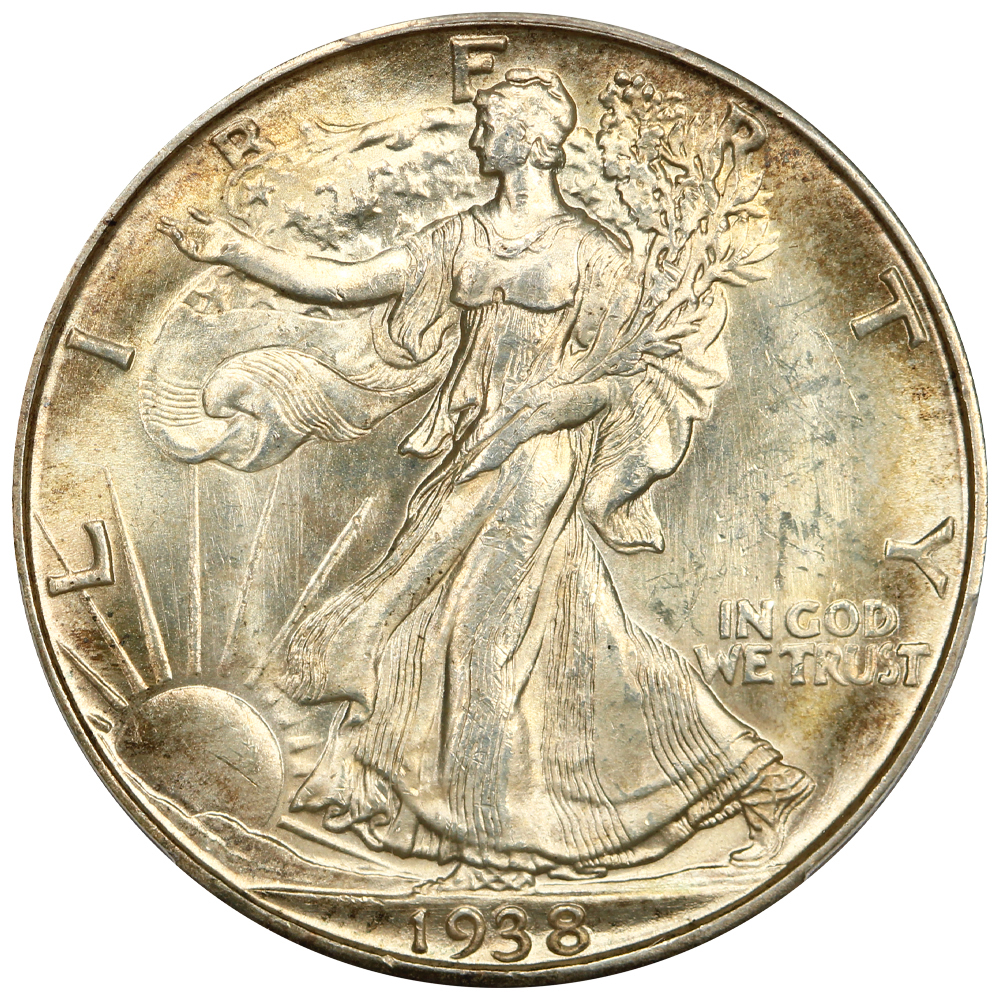

CAC Population of Walking Liberty Half Dollars
Of course, many non-CAC, common date Walkers will fail at CAC, if submitted, even many that are carefully selected by experienced collectors. With very rare exceptions, collectors should not think of themselves as top-level grading experts. Each common date Walker, however, costs just a small fraction of the respective price of each key or semi-key Walker that is certified in the same grade.
A collector will not significantly increase the total cost of his or her set by acquiring some duplicates or triplicates of common dates in MS-64 grade. If a problematic ‘common date’ Walker is purchased by mistake or as part of a learning process, not much money will be lost. In regards to MS-64 grade coins, the total cost of dozens of ‘Late Date’ Walkers is likely to be much lower than the cost of just one key date Walker.
A strategy to avoid sub-par common date Walkers is to include CAC approved MS-65 grade ‘Late Date’ Walkers in a set of mostly, CAC approved MS-63 to MS-64 grade coins. Certainly, there is no harm in adding a few MS-65 grade coins to a set that was planned to consist of MS-63 or MS-64 grade coins, especially since MS-65 grade ‘Late Dates’ are relatively inexpensive. The CPG retail estimate for a CAC approved MS-65 grade Walker is $115 for the 1942, 1943, 1944, 1944-D, 1945, 1945-D, 1946, 1946-D and 1946-S.
The ‘Late Dates’ (1941-47) are not the only Walkers for which CAC populations in MS-63 and MS-64 are curiously low. Though 1939, 1939-D, 1939-S, 1940 and 1940-S are all ‘better dates’ that are mildly common, not many of them in MS-63 to -64 grades have even been submitted to CAC. Nevertheless, CAC approved coins of these dates are around.
How CAC Approved Walking Liberty Half Dollars Fare at Auctions
On January 27, 2019, the Goldbergs auctioned a CAC approved MS-64 grade 1939 for $72. On March 15, 2020, Heritage sold a CAC approved MS-64 grade 1939-S for $126. On Jan. 12, 2021, Heritage sold a CAC approved MS-64 grade 1940 Walker for $99. On Sept. 2, 2019, the Goldbergs auctioned a CAC approved MS-64 grade 1940-S for $102.
The 1938-D Walker is intriguing as it is probably the only regular issue U.S. coin minted after 1934, and intended for mass circulation, that is extremely and notably scarce in relative terms. The 1938-D half is an anomaly. Overdates and other U.S. Mint errors are different matters, as are coins that were made to be sold at a premium to collectors. For every date in the series of Walking Liberty half dollars, business strikes were minted for mass circulation.
On Nov. 29, 2021, Stack’s Bowers auctioned a CAC approved, NGC graded MS-63 1938-D half dollar for $720. On Oct. 17, 2021, David Lawrence Rare Coins sold a CAC approved, PCGS graded MS-65 1938-D for $875.
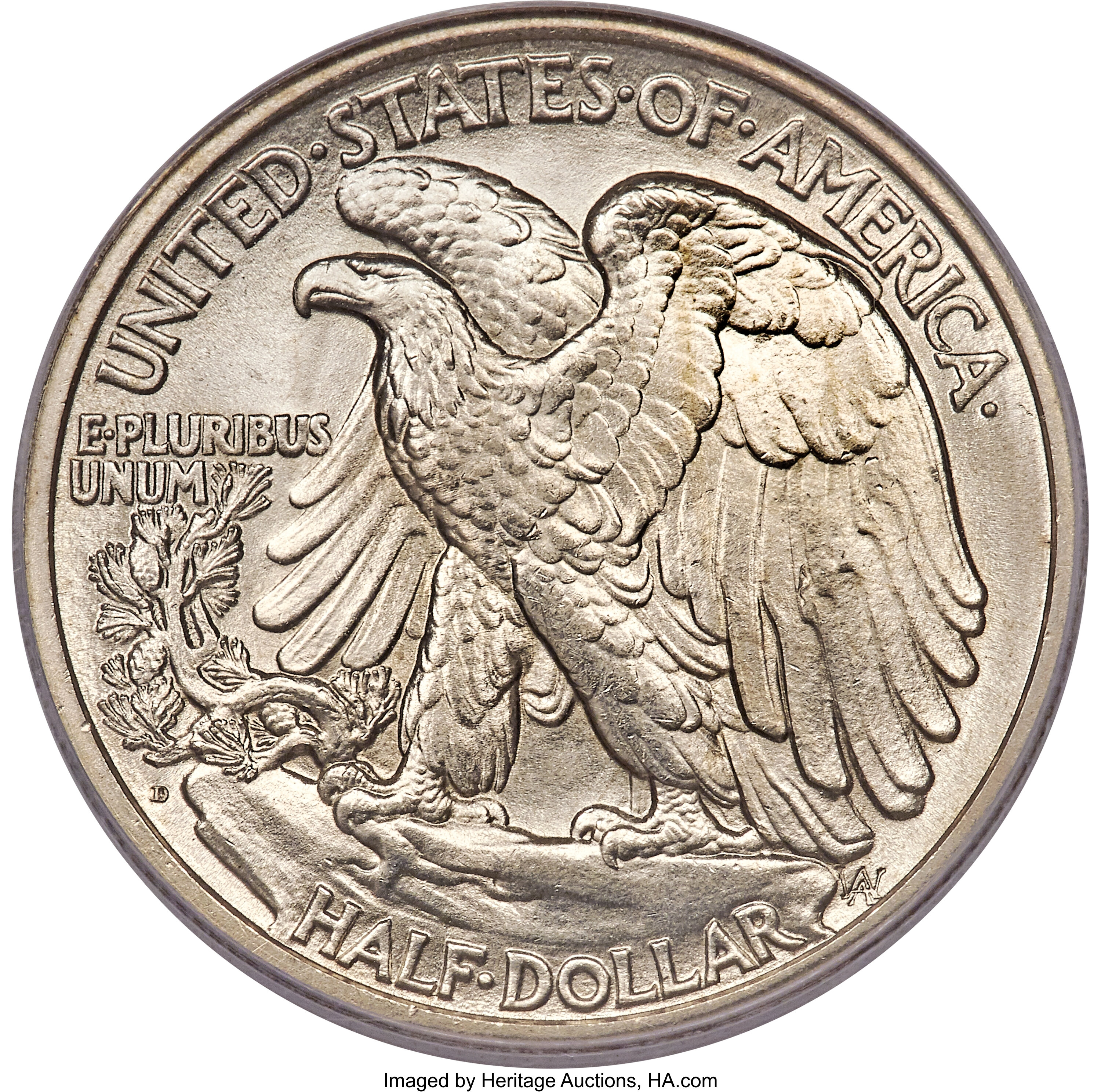
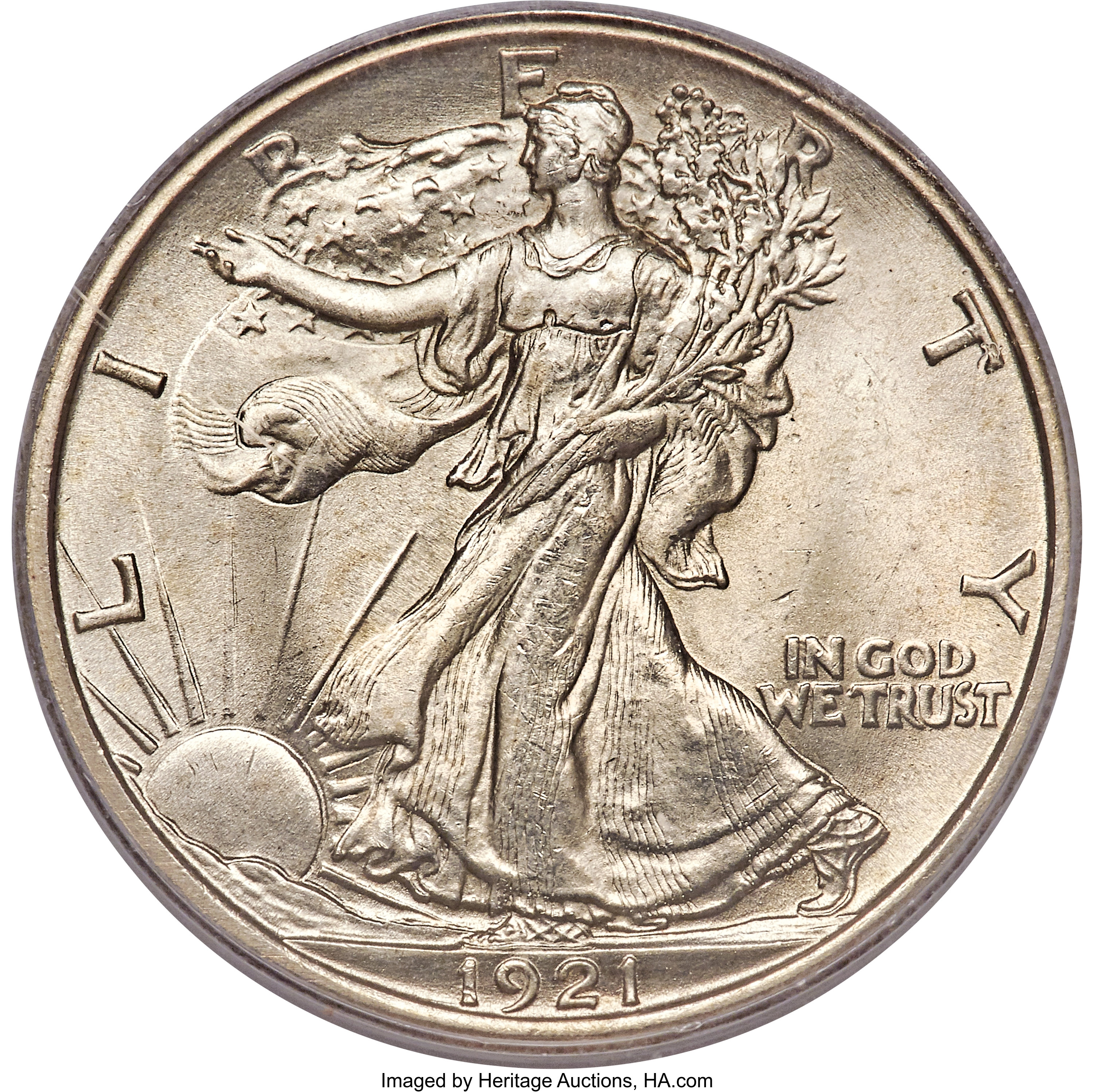
The 1935-S and the 1934-S are nowhere near as scarce as the 1938-D overall, yet are conditionally scarce in MS-63 and higher grades. On March 14, 2021, the firm called GreatCollections sold a CAC approved, NGC graded MS-64 1935-S for $805.20. On July 29, 2021, Heritage sold a CAC approved, NGC graded MS-64 1934-S for $990.
The 1934 is a common date that is easy to acquire in MS-63 to MS-64 grades for $90 to $160 each. On Nov. 9, 2021, Heritage sold a CAC approved MS-64 grade 1934 Walker for $139.
MS-63 grade 1933-S and 1929-S Walkers are much better dates. This means they are relatively much scarcer than common dates and significantly scarcer than mildly better dates in the series of Walking Liberty half dollars.
On Nov. 29, 2021, a CAC approved NGC graded MS-63 1933-S was auctioned by Stack’s Bowers for $1560. On July 23, 2021, Scotsman auctioned a CAC approved, PCGS graded MS-64 1933-S for $2065. According to the Greysheet and CPG price guides, the 1929-S is somewhat less expensive than the 1933-S in MS-63 and MS-64 grades.
Many pre-1929 Walkers cost thousands of dollars each in MS-63 grade. The 1917, in contrast, is the most common pre-1934 Walker, an inexpensive, true classic U.S. coin from the era of the first world war. On Sept. 27, 2020, GreatCollections sold a CAC approved MS-63 grade 1917 half for $225.50. On Aug. 3, 2021, Heritage sold a CAC approved MS-64 grade 1917 for $468.
The 1916-D, 1916-S, 1918, 1918-S and the 1920 all cost much more than a 1917 Walker of equivalent quality, yet are much less costly than the keys and semi-keys. Moreover, the relative rarity of Walkers varies considerably in different grade ranges. In MS-63 to MS-64 grades, the 1919-D, the 1921-D and the 1921-S are the keys.
If offered in 2022, a CAC approved MS-64 grade 1919-D half would probably sell at auction for a price in the range of $20,000 to $30,000. However, if two or more grading-wholesalers figure that a coin is a candidate to be upgraded, then that coin might bring a price well above the pertinent moderate to strong range. Coins with especially colorful toning sometimes bring large premiums, too.
A MS-63 grade 1919-D has not been sold in a major auction in a while. The CPG retail price estimate for a CAC approved MS-63 1919-D is $14,400. It is interesting that this is higher than the CPG retail estimate for a MS-63 grade 1921-D, $13,800. Most interested collectors and even some full-time dealers probably think of the 1921-D half as being much scarcer than the 1919-D, even in mint state grades.
In Choice to Gem Uncirculated grades, MS-63 and higher, the total CAC population for the 1921-D is fifty-two and the total for the 1919-D is just thirty-two, as of Dec. 27, 2021. Twenty-seven 1921-D Walkers have been CAC approved in the MS-64 range.
In a Heritage auction that was conducted during late April 2021, there were two PCGS graded MS-64+ 1921-D Walkers, both of which had CAC stickers. One brought $27,600 and the other, $18,600.
As experts at CAC ignore the plus aspect of plus grades assigned by PCGS or NGC, it does not follow that experts at CAC thought that both these PCGS graded MS-64+ coins graded in the high end of the MS-64 range or that either of them did. I saw both coins in actuality. In my opinion, the coin that brought $27,600 was more appealing than the one that brought $18,600, and was worth the difference. Coins are individuals, which cannot be fully described with numerical grades.

Show off Your Collection in the CAC Registry!
Have CAC coins of your own? If so, check out the CAC Registry–the free online platform to track your coin inventory, showcase your coins by building public sets, and compete with like-minded collectors!
Walking Liberty Half Dollar Premiums from Good to Mint State
In Good to Fine grades, the 1921 and the 1921-D are more valuable than the 1921-S. In MS-65, the 1919-D is much more valuable than the 1921-S. In grades from XF-40 to MS-64, however, the 1921-S is the queen of Walkers.
CAC has approved three as MS-63, eleven as MS-64 and six as MS-65, for a total of twenty Choice to Gem Uncirculated 1921-S Walkers As of Dec. 27, 2021, CAC had not approved a 1921-S half in a grade above MS-65.
The CPG retail price estimate for a CAC approved MS-63 grade 1921-S is $39,300. It is probably less difficult to obtain a MS-64 grade 1921-S.
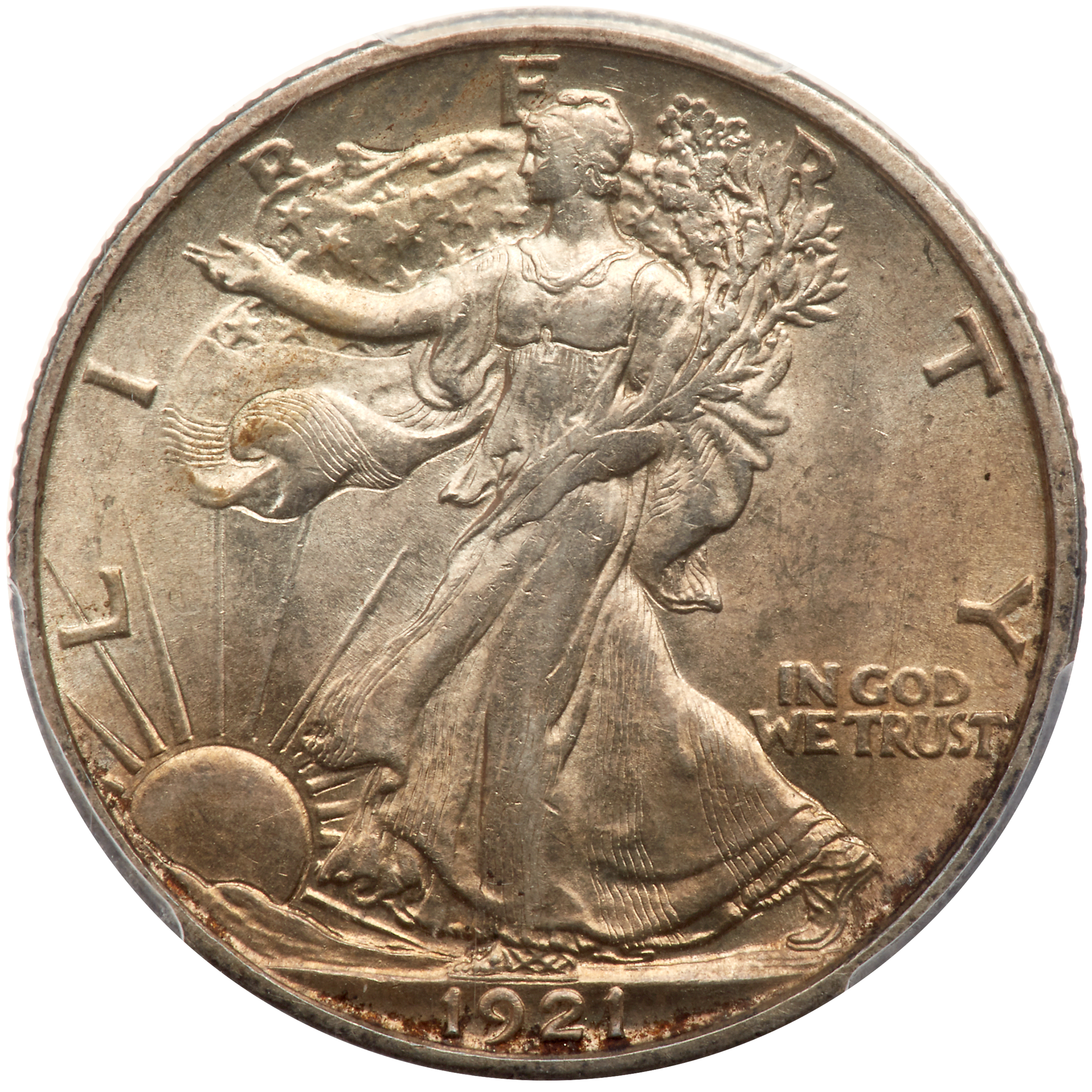
On Feb. 24, 2021, Heritage auctioned a PCGS graded MS-64+ 1921-S Walker, which was CAC approved at the MS-64 level, for $60,000. Earlier, Heritage auctioned the same coin on Oct. 14, 2020, for $50,400. Along with mint luster, this coin features much natural and somewhat mottled russet toning of hues that frequently formed on properly stored Walkers. The appearance of this toned 1921-S is more distinctive and historical than those of obviously dipped-white Walkers.
A Choice Uncirculated set of Walkers is a practical objective. There are no extreme condition rarities. More than twenty coins, though, will cost more than $1000 each, and the keys will cost much more than $5000 each in MS-63 and higher grades.
If a collector is willing to accept some nice AU-58 or AU-55 grade coins in a set that otherwise consists of Walkers that grade in the MS-63 to -64 range, then the total cost of the set can be reduced by many thousands of dollars. While a CAC approved MS-64 grade 1921-S might retail for more than $65,000, a CAC approved AU-55 or AU-58 grade 1921-S would probably retail for around $20,000. On Feb. 13, 2017, the Goldbergs auctioned a CAC approved AU-58 grade 1921-S half for $20,563.
Before buying Walkers that cost more than $2,500 each,it makes sense to acquire representatives of some of the dates that cost from $200 to $2500 in MS-63 to MS-64 grades. Collectors tend to learn while they are collecting. A collector may gain experience and see how his or her set is developing before spending relatively large sums on individual coins. It is important to not be in a hurry and to enjoy the process of building a set.
Images are copyrighted by Heritage Auctions (www.ha.com), David Lawrence Rare Coins (www.DavidLawrence.com), or Ira & Larry Goldberg Coins & Collectibles (www.GoldbergCoins.com).
Copyright © 2021 Greg Reynolds
About the Author
Greg is a professional numismatist and researcher, having written more than 775 articles published in ten different publications relating to coins, patterns, and medals. He has won awards for analyses, interpretation of rarity, historical research, and critiques. In 2002 and again in 2023, Reynolds was the sole winner of the Numismatic Literary Guild (NLG) award for “Best All-Around Portfolio”.
Greg has carefully examined thousands of truly rare and conditionally rare classic U.S. coins, including a majority of the most famous rarities. He is also an expert in British coins. He is available for private consultations.
Email: Insightful10@gmail.com
